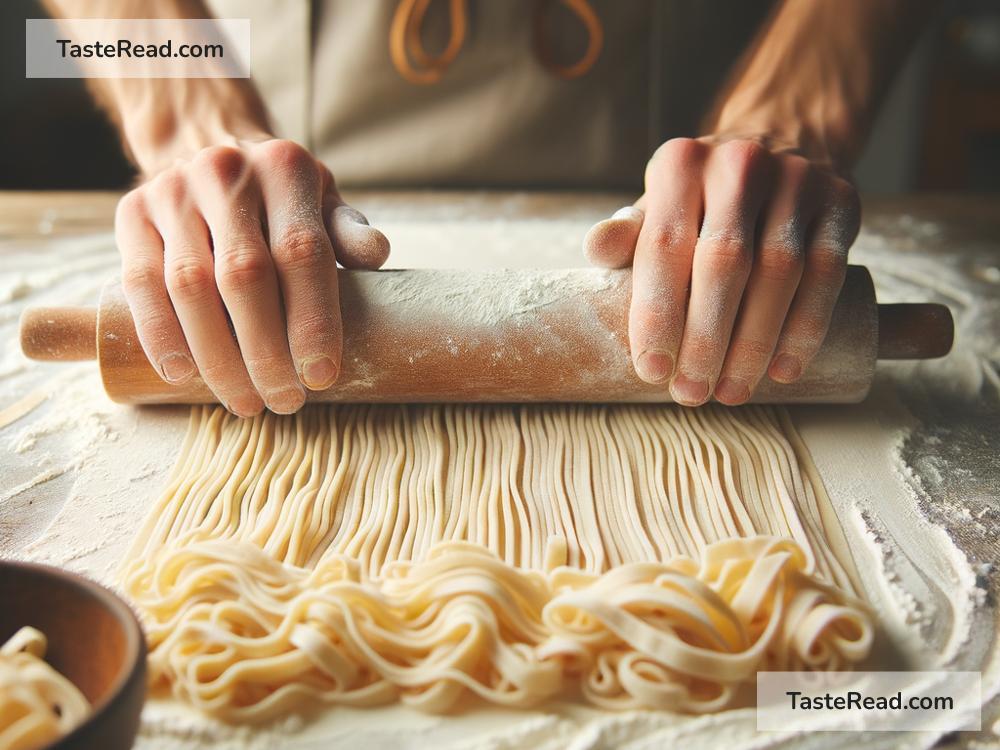How to Make Homemade Ramen Noodles: A Simple Guide
If you’re a fan of ramen, then you know the noodles are the heart and soul of the dish. Making ramen noodles from scratch might sound intimidating, but trust me, it’s easier than you think! With just a few basic ingredients, some time, and a bit of practice, you can create fresh, delicious noodles in your own kitchen. In this blog, I’ll walk you through the process step-by-step, using simple language so anyone can follow along. Let’s dive in!
What Are Ramen Noodles?
Ramen noodles are thin, chewy noodles made from wheat flour, water, salt, and a special ingredient called kansui. Kansui is an alkaline water solution that gives ramen its unique texture and slightly yellow color. You can buy kansui online or substitute it with baking soda, which is a great alternative.
Homemade ramen noodles are fresh, flavorful, and much tastier than store-bought ones. Plus, making them yourself allows you to experiment and customize the noodles to suit your preferences.
Ingredients You’ll Need
To make ramen noodles, you only need a few simple ingredients:
– All-purpose flour: 2 cups (250 grams)
– Water: ¾ cup (175 milliliters), divided
– Baking soda: 1 teaspoon
– Salt: 1 teaspoon
That’s it! With these basic ingredients, you’re ready to get started.
Tools You’ll Need
You don’t need fancy equipment to make ramen noodles. Here’s what you’ll need:
– A large mixing bowl
– A rolling pin
– A knife or pasta cutter
– A clean surface for kneading and rolling dough
– A pot for boiling water
If you have a pasta machine, it will make this process quicker, but it’s not required.
Step-by-Step Instructions
1. Prepare the Kansui Substitute (if needed)
If you’re using baking soda instead of kansui, you’ll need to prepare it first. Simply bake the baking soda to increase its alkalinity. Spread 1 teaspoon of baking soda on a baking tray and bake it at 250°F (120°C) for about 15 minutes. Once cooled, use it in place of kansui.
2. Mix the Dough
Combine the flour, salt, and baked baking soda in a large mixing bowl. Gradually add half of the water (about ⅓ cup) and stir until the mixture starts to come together. Add the remaining water a little at a time, mixing well until you form a rough dough. The dough will feel a bit dry and crumbly at this stage—that’s okay! Resist the urge to add more water.
3. Knead the Dough
Turn the dough out onto a clean surface and knead it by folding and pressing it with the palm of your hand. Keep kneading for about 10-15 minutes until it becomes smooth and elastic. This step is important for developing the gluten, which gives the noodles their chewy texture.
After kneading, wrap the dough tightly in plastic wrap or put it in a sealed container. Let it rest for 30 minutes to 1 hour. Resting allows the dough to relax and absorb the moisture, making it easier to roll out.
4. Roll Out the Dough
After resting, roll out the dough on a flat surface. Use a rolling pin to flatten it into a thin sheet—aim for about 1-2 millimeters thick. If the dough feels sticky, lightly dust the surface and rolling pin with flour.
If you have a pasta machine, you can pass the dough through it several times to achieve the desired thinness.
5. Cut the Noodles
Once the dough is rolled out, use a sharp knife or a pasta cutter to slice the dough into long, thin strips. These will be your noodles! Try to make them uniform in size for even cooking. If you like extra-thin noodles, you can slice them narrower. For thicker noodles, cut slightly wider strips.
Dust the noodles with a little flour to prevent them from sticking together.
6. Cook the Noodles
Bring a large pot of water to a boil and add a pinch of salt. Drop the noodles into the boiling water and cook for about 2-3 minutes, or until they float to the surface. Homemade ramen noodles cook quickly, so be careful not to overcook them, as they can become mushy.
Once cooked, drain the noodles and rinse them with cold water to stop the cooking process. This also helps remove excess starch and keeps the noodles nice and firm.
Serving Suggestions
Your fresh ramen noodles are ready to be used! Add them to your favorite ramen soup broth and top with ingredients like sliced pork, boiled eggs, green onions, seaweed, or any other toppings you love.
You can also use the noodles in stir-fried dishes or as a base for noodle salads. Homemade ramen noodles are versatile and taste amazing in many recipes.
Tips for Success
- Don’t skip the resting step: Giving the dough time to relax makes it easier to roll out and improves the texture.
- Experiment with thickness: Adjust the thickness of the noodles based on your personal preference.
- Make extra and freeze: Ramen noodles freeze well. Dust with flour and store them in a freezer-safe container. When ready to use, cook them straight from frozen.
Conclusion
Making homemade ramen noodles is a fun and rewarding kitchen project. With a bit of practice, you’ll be able to create noodles that are just the way you like them—chewy, fresh, and full of flavor. Whether you’re a ramen enthusiast or just looking to try something new, these homemade noodles will elevate your cooking game. Give it a try and impress your friends and family with your delicious creations!
Happy cooking!


